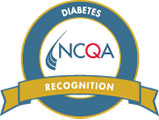To Buy Levofloxacin Online Visit Our Pharmacy ↓
 **pediatric Use of Levofloxacin: Guidelines and Precautions**
**pediatric Use of Levofloxacin: Guidelines and Precautions**
Understanding Levofloxacin and Its Uses in Children
Levofloxacin is an antibiotic that belongs to the fluoroquinolone class, primarily used to treat bacterial infections. In pediatrics, its prescription (Rx) is carefully considered due to its potent nature. This elixir fights severe infections like multidrug-resistant pneumonia and complicated urinary tract infections, stepping in when other antibiotics fail. However, it's crucial to understand that levofloxacin isn’t a first-line drug for children because of potential side effects and FDA warnings.
| Condition | Typical Usage |
|---|---|
| Multidrug-Resistant Pneumonia | When other antibiotics are ineffective |
| Complicated UTIs | For severe or resistant infections |
Given its strength, pediatricians must assess the child's medical history and current condition carefully before scripting levofloxacin. It’s not your everyday med and should be handled with the utmost caution to minimize risks.
Approved Pediatric Conditions for Levofloxacin Prescriptions

In pediatrics, levofloxacin is a go-to in treating specific conditions such as complicated urinary tract infections, inhalational anthrax post-exposure, and certain types of bacterial lung infections. Kids battling stubborn UTIs can get some relief from this robust script. However, while it is effective, it’s crucial that healthcare providers follow precise sig details, especially when dealing with severe infections like anthrax.
Additionally, levofloxacin is sometimes used as a part of a cocktail for treating infections that haven't responded to other antibiotics. This application requires solid knowledge of dosage adjustments, particularly as the child’s body metabolism can vary significantly from that of an adult. Careful med rec and vigilance are critical to prevent unwanted side effects and ensure patient safety.
Dosage Guidelines and Age-appropriate Adjustments
When prescribing levofloxacin for pediatric patients, it's crucial to adhere to specific dosage guidelines tailored to age and weight. Standard dosing protocols often range from 8 to 10 mg/kg per day, but adjustments are essential to avoid toxicity. Recognizing that young children metabolize medications differently than older children and adults is imperative.
The "Sig" on the script must be clear, ensuring proper dosage and duration. Also, pharmacists should pay careful attention during the "Count and Pour" process to ensure precision. Monitoring for potential side effects and periodic reviews are vital to adjust dosages appropriately.
Recognizing Potential Side Effects in Young Patients

Children prescribed levofloxacin may experience certain adverse effects that parents and caregivers should be vigilant about. Commonly reported side effects include gastrointestinal issues like nausea or diarrhea. Statistical data also points to the potential for musculoskeletal problems such as tendinitis or joint pain. In rare instances, levofloxacin might impact a child's nervous system, causing headaches, dizziness, or even agitation. It's crucial for healthcare providers to provide clear "Sig" instructions and ensure parents understand the importance of following the prescribed dosage to mitigate these risks.
Important Precautions before Prescribing Levofloxacin
Before prescribing levofloxacin to children, ensuring a thorough evaluation of potential risks is crucial. Physicians must avoid levofloxacin in pediatric patients with a history of tendon disorders or existing "red flags" related to musculoskeletal health. To prevent complications, it's essential to conduct a detailed "Med Rec" and consider alternatives whenever possible. Effective communication of the "Sig" is also vital, ensuring caregivers understand the precise instructions.
| Precaution | Action |
|---|---|
| History of Tendon Disorders | Avoid prescribing if any tendon issues are present. |
| Musculoskeletal Health | Screen for health "red flags" before prescribing. |
| Medication Record | Conduct a thorough "Med Rec". |
| Prescribing Instructions ("Sig") | Ensure clear communication with caregivers. |
Additionally, understanding any potential "Insurance Rejects" is vital to avoid "Surprise at Sticker Shock" when choosing this antibiotic. Regular follow-ups should be part of the treatment plan, with the healthcare provider ready to respond "stat" to any adverse reactions arising from the medication.
Monitoring and Follow-up during Treatment
Ensuring the safe and effective use of levofloxacin in pediatric patients requires careful monitoring. Regular follow-up appointments are crucial to assess the child's response to the medication and to catch any potential side effects early. Parents should be advised to meticulously follow the Sig provided on the script, ensuring their child adheres to dosage instructions.
Healthcare providers should perform periodic evaluations, checking for signs of adverse reactions such as gastrointestinal issues or tendonitis. Additionally, a Med Rec at each visit can help streamline the process, verifying that all medications, including OTC and fridge drugs, are accounted for. This helps prevent any harmful drug interactions.
If side effects are observed, they must be addressed stat. Documentation of any adverse reactions in the hard copy of the patient's medical records is essential for ongoing care. The prescriber must also be alert to any unusual symptoms that could indicate more serious complications, ensuring that pediatric patients receive the best possible care.
![]()








 We are now located at
We are now located at


